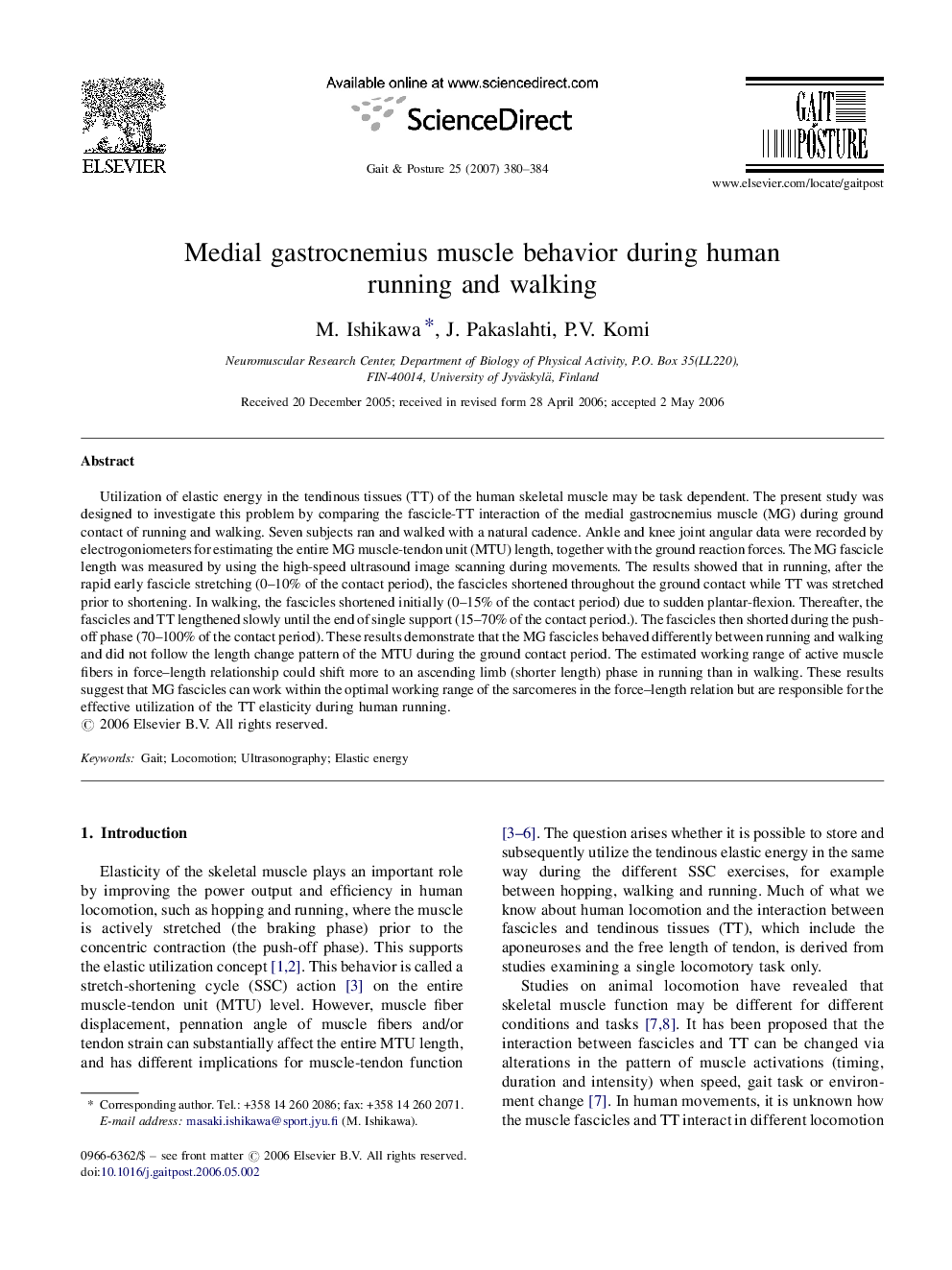| Article ID | Journal | Published Year | Pages | File Type |
|---|---|---|---|---|
| 4058216 | Gait & Posture | 2007 | 5 Pages |
Utilization of elastic energy in the tendinous tissues (TT) of the human skeletal muscle may be task dependent. The present study was designed to investigate this problem by comparing the fascicle-TT interaction of the medial gastrocnemius muscle (MG) during ground contact of running and walking. Seven subjects ran and walked with a natural cadence. Ankle and knee joint angular data were recorded by electrogoniometers for estimating the entire MG muscle-tendon unit (MTU) length, together with the ground reaction forces. The MG fascicle length was measured by using the high-speed ultrasound image scanning during movements. The results showed that in running, after the rapid early fascicle stretching (0–10% of the contact period), the fascicles shortened throughout the ground contact while TT was stretched prior to shortening. In walking, the fascicles shortened initially (0–15% of the contact period) due to sudden plantar-flexion. Thereafter, the fascicles and TT lengthened slowly until the end of single support (15–70% of the contact period.). The fascicles then shorted during the push-off phase (70–100% of the contact period). These results demonstrate that the MG fascicles behaved differently between running and walking and did not follow the length change pattern of the MTU during the ground contact period. The estimated working range of active muscle fibers in force–length relationship could shift more to an ascending limb (shorter length) phase in running than in walking. These results suggest that MG fascicles can work within the optimal working range of the sarcomeres in the force–length relation but are responsible for the effective utilization of the TT elasticity during human running.
